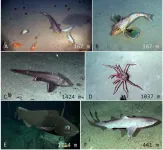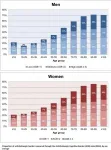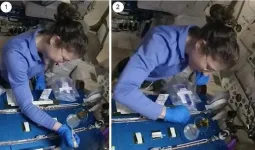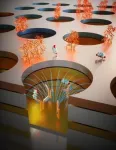Streetonomics: using street names to quantify a city's cultural values
2021-06-30
(Press-News.org) A city's street names can provide a glimpse into its cultural value system and a way to quantify cultural indicators, according to a study published June 30, 2021 in the open-access journal PLOS ONE by Melanie Bancilhon from Washington University in Saint Louis, U.S., and colleagues.
Ever since named streets have existed, they have been used as a form of social engineering, mirroring a town or city's social, cultural, political, and religious values. Building off this concept in what they term "streetonomics," Bancilhon and colleagues used street names as an alternative route to quantify cultural indicators in four influential Western cities: Paris, Vienna, London, and New York.
The authors used multiple open data sources to study 4,932 honorific streets (streets named for a person) across the four cities. Their analysis examined gender bias in street name honorees; when the honorees lived compared to the present; the most celebrated professions for honorees; and whether foreigners were recognized as street name honorees.
Vienna had the highest proportion of its streets named to honor a woman, at 54 percent; London came a relatively close second, at 40 percent. In New York, only 26 percent of all streets are named after women, and in Paris this proportion is even lower, at only 4 percent. Most streets in Paris are named after people who lived in the 1860s, when urban planner Haussman worked with Napoleon III to transform Paris into the capital city of an empire. In Vienna, most of the street honorees lived through the 1900s, when the city was expanding and rebuilding after WWI. In London, streets are named mostly after people who lived through the 1700s and 1800s, following growth after the Great Fire of London and large-scale interventions promoted by King George III. In New York, most streets honor people who lived through the 1950s to 2000s, with 36 percent named specifically for 9/11 victims and emergency responders. In terms of the types of professions held by street honorees, Paris streets honor artists, writers, scientists, and members of the military; Viennese streets also honor artists, as well as members of legal and social occupations. London's streets celebrate the British royal family, politicians, and military professionals predominantly, and New York's streets have consistently celebrated artists, as well as many civil servants honored post-9/11. Vienna was the city with the most streets named after foreigners, at 45 percent, followed far behind by London (14.6 percent) Paris (10.9 percent), and New York (3.2 percent).
The authors note their study has several limitations--perhaps most importantly, the open source data sources used in the analysis are themselves potentially biased. However, the implications of using this type of open data to study urban culture and track changes over time are wide, and suggest many different avenues for future work.
The authors add: "A new text mining approach is able to automatically link streets to information about their honorees, and study how a city's cultural values changed through space and time, revealing how intangible values encoded in street names such as gender biases evolved over the centuries."
INFORMATION:
Citation: Bancilhon M, Constantinides M, Bogucka EP, Aiello LM, Quercia D (2021) Streetonomics: Quantifying culture using street names. PLoS ONE 16(6): e0252869. https://doi.org/10.1371/journal.pone.0252869
Funding: Nokia Bell Labs provided support in the form of salaries for authors [MC, LMA, DQ], but did not have any additional role in the study design, data collection and analysis, decision to publish, or preparation of the manuscript. The specific roles of these authors are articulated in the 'author contributions' section.
Competing Interests: Nokia Bell Labs provided support in the form of salaries for authors [MC, LMA, DQ]. This does not alter our adherence to PLOS ONE policies on sharing data and materials
In your coverage please use this URL to provide access to the freely available article in PLOS ONE: https://journals.plos.org/plosone/article?id=10.1371/journal.pone.0252869
[Attachments] See images for this press release:
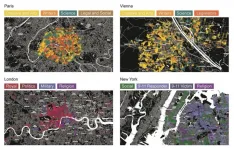
ELSE PRESS RELEASES FROM THIS DATE:
2021-06-30
The deep sea Pacific Salas y Gómez and Nazca ridges are highly biodiverse and host unique fish and invertebrate taxa, according to video surveys.
INFORMATION:
Article Title: Deep-sea biodiversity at the extremes of the Salas y Gómez and Nazca ridges with implications for conservation
Funding: The expeditions were funded by the National Geographic Society and Pristine Seas donors with support to AMF. Conservation International, the Paul M. Angell Family Foundation, Tom and Currie Barron, and Alan Eustace provided additional support to DW, WG and JG. The Chilean Millennium Science Initiative Program grant #NC120030 ...
2021-06-30
In the German population, a surprisingly high 6% of under-18s are at risk of cognitive decline, falls and more from the cumulative effect of anticholinergic medications such as antihistamines and antidepressants.
INFORMATION:
Article Title: Anticholinergic burden: First comprehensive analysis using claims data shows large variation by age and sex
Funding: The authors received no external funding for this work.
Competing Interests: UH, OR, MB and JR are working at an independent, non-profit research institute, the Leibniz Institute for Prevention Research and Epidemiology - BIPS. Unrelated to this study, BIPS occasionally conducts studies financed by the pharmaceutical industry. Almost exclusively, these are post-authorization ...
2021-06-30
Researchers have developed and successfully demonstrated a novel method for studying how cells repair damaged DNA in space. Sarah Stahl-Rommel of Genes in Space and colleagues present the new technique in the open-access journal PLOS ONE on June 30, 2021.
Damage to an organism's DNA can occur during normal biological processes or as a result of environmental causes, such as UV light. In humans and other animals, damaged DNA can lead to cancer. Fortunately, cells have several different natural strategies by which damaged DNA can be repaired. Astronauts traveling outside of Earth's protective atmosphere face increased risk of DNA damage due to the ionizing radiation ...
2021-06-30
An important function of our vision is to segregate relevant figures from the irrelevant background. When we look at a visual stimulus, it drives a cascade of neural activity from low-level to higher level visual brain areas. The higher areas also provide feedback to the lower areas, where figures elicit more activity than the background, as if figures in the brain are highlighted with extra activity. Researchers from the Netherlands Institute of Neuroscience (NIN) now showed that feedback causes the extra neuronal activity in low-level areas and that the extra activity is essential for figure-ground ...
2021-06-30
MIT engineers and researchers in South Korea have developed a sweat-proof "electronic skin" -- a conformable, sensor-embedded sticky patch that monitors a person's health without malfunctioning or peeling away, even when a wearer is perspiring.
The patch is patterned with artificial sweat ducts, similar to pores in human skin, that the researchers etched through the material's ultrathin layers. The pores perforate the patch in a kirigami-like pattern, similar to that of the Japanese paper-cutting art. The design ensures that sweat can escape through the patch, preventing skin irritation and damage to embedded sensors.
The kirigami design also helps the patch conform to human skin as it stretches and bends. This flexibility, paired with ...
2021-06-30
New Brunswick, N.J. (June 30, 2021) - A Rutgers-led team of researchers has developed a microchip that can measure stress hormones in real time from a drop of blood.
The study appears in the journal Science Advances.
Cortisol and other stress hormones regulate many aspects of our physical and mental health, including sleep quality. High levels of cortisol can result in poor sleep, which increases stress that can contribute to panic attacks, heart attacks and other ailments.
Currently, measuring cortisol takes costly and cumbersome laboratory setups, so the Rutgers-led team looked for a way to monitor its natural fluctuations in daily life and provide patients with feedback that allows them to receive the right treatment at the right ...
2021-06-30
A new study based on computational analyses of how SARS-CoV-2 interacts with host cell proteins has identified 200 previously approved drugs that could be repurposed to treat COVID-19, 40 of which have already entered clinical trials. Furthermore, Namshik Han and colleagues identified 30 proteins induced by the SARS-CoV-2 virus that are targeted by 8 or more existing drugs, finding that nitric oxide production, which is important for viral synthesis, may be targeted by these drugs to fight infection. The researchers also identified 2 of these drugs with good safety profiles that successfully reduced viral replication in cellular assays, suggesting they could potentially prevent or treat COVID-19. Scientists now have sufficient ...
2021-06-30
The Bronze Age in the eastern Mediterranean has long been considered by researchers to have been the 'first international age,' especially the period from 1600-1200 BC, when powerful empires from Anatolia, Mesopotamia, and Egypt set up large networks of subordinate client kingdoms in the Near East. These empires fought, traded, and corresponded with one another, and ancient texts from the period reveal rich economic and social networks that enabled the movement of people and goods.
A new study conducted by an interdisciplinary team of archaeologists, geneticists, and isotope experts, and published in PLOS ONE, investigated the movement of people in this period at a single regional center, a Bronze Age city-state called Alalakh in present-day southeastern Turkey. Their results indicate ...
2021-06-30
University of Leeds news
Embargo: Wednesday 30 June, 7pm GMT
Bereavement care lacking for ethnic minorities
Grieving friends and relatives from ethnic minority backgrounds are suffering from a lack of appropriate help to cope with the loss of a loved one, especially during the COVID-19 pandemic, researchers say.
And the scarcity of data on the services that are available means providers do not know how support should be delivered to ensure they are suitable for different groups of people.
The researchers, led by the University of Leeds and the University of Sheffield, reviewed evidence on UK bereavement care for ethnic minority ...
2021-06-30
Research at Baylor College of Medicine, the Texas Heart Institute and collaborating institutions is moving a novel promising gene therapy to treat heart failure closer to the clinic.
Published in Science Translational Medicine, the study showed that knocking down the Hippo signaling pathway in cardiomyocytes in the hearts of pigs after they had a heart attack, resulted in heart tissue renewal and improved function when compared with pig hearts in which the Hippo signaling pathway was not modified. Given that the pig's heart is considered a valuable model to study the human heart, the findings suggest that this gene therapy may be useful in treating human heart failure.
Heart failure remains the leading cause of mortality in the western ...
LAST 30 PRESS RELEASES:
[Press-News.org] Streetonomics: using street names to quantify a city's cultural values

